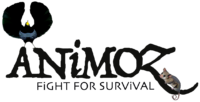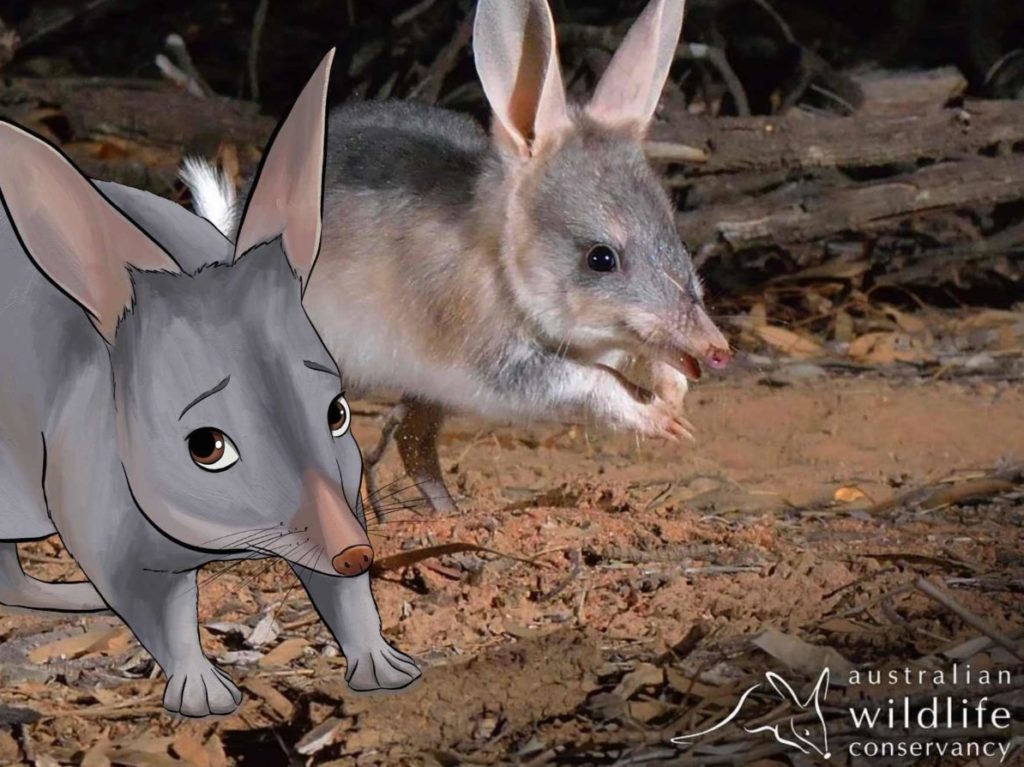Rangers, we’ve got exciting news to tell you about LAGOTi (The Greater bilby)!
Ecologists with Australian Wildlife Conservancy have recorded the first Bilby born in a NSW National Park in more than a century!
Last year the NSW Government’s Saving Our Species program supported AWC in returning Bilbies – one of Australia’s most iconic threatened mammals – to a National Park after going locally extinct in that state more than 100 years ago.
Their return to the public estate is a powerful demonstration of our ability to work together to turn back the tide of extinctions in Australia.
During the initial release, AWC translocated 60 Bilbies to the Pilliga, into a specially constructed fenced area within the 5,800-hectare feral predator-free zone (construction was completed in just four months). Since their release, AWC ecologists have been monitoring the progress of the Bilbies through a combination of spotlighting, trapping and remote cameras.
Seven Bilbies were detected by spotlighting, and a further four were trapped over four nights. Despite prevailing hot and dry conditions, the Bilbies are thriving – all the animals that were recaptured had put on weight and were in good condition.
Among the animals trapped during the survey was a new female, the first recorded birth of a Bilby in a NSW national park in more than 100 years.

The Bilbies have settled well into their new environment, within days each digging a burrow (up to 3 metres deep) in the sandy soil. The landscape has been quickly transformed by small foraging pits and burrows – the Bilbies living up to their moniker of ‘ecological engineers’.
This frenetic activity by our native diggers has not been seen in a national park for more than 100 years. Bilbies were last seen in NSW in 1912. Once widespread across much of Australia, predation by feral cats and foxes and competition with feral herbivores, like rabbits, have seen Bilby populations collapse.
AWC’s network of fenced safe-havens now protects 15 per cent of the global population of Bilbies and are providing important source populations of Bilbies for rewilding efforts, like this one in the Pilliga. Our historic partnership with the NSW Government to establish a fenced area here in the Pilliga is critical for restoring the State’s natural capital and securing the future of the species.
AWC’s partnership with NSW National Parks at Pilliga and Mallee Cliffs includes implementing a framework for measuring ecological health and improving conservation land management, as well as establishing a large feral predator-free haven in each national park. The project will see up to 10 native mammal species currently listed as extinct in NSW returned to the State. (Stay tuned for an update from Mallee Cliffs, where construction is due to begin shortly on the predator-proof fence).
Establishing a field operations base for staff working on-site is the next priority for AWC. This on-ground infrastructure will be a critical base for AWC’s field staff conducting ecological monitoring – over 15,000 trap nights per year are carried out in the Pilliga alone under this project – as well as implementing a suite of land management services across the Pilliga site, covering approximately 35,000 hectares.

With Easter just around the corner, please consider a tax-deductible gift that will go directly towards the ongoing conservation of one of Australia’s most threatened species, by supporting the establishment of the field operations base for the AWC field team in the Pilliga and helping to secure the future of Australia’s Bilbies.
This article was taken from an announcement by Australian Wildlife Conservancy. Visit their website to see more of their exciting work!


Hi! I’ve been reading your blog for a while now
and finally got the courage to go ahead and give you a shout out from Huffman Tx!
Just wanted to tell you keep up the fantastic job!